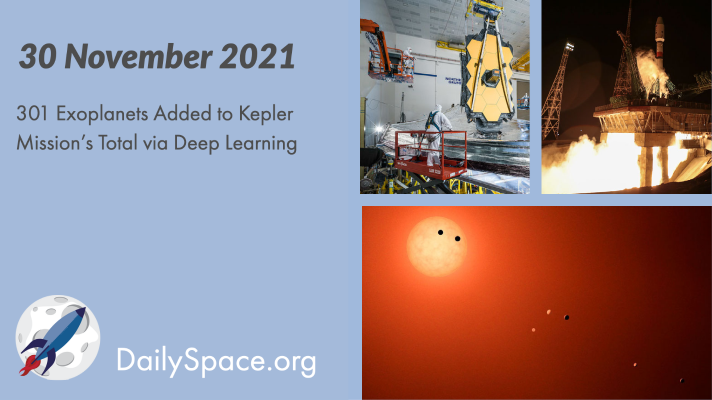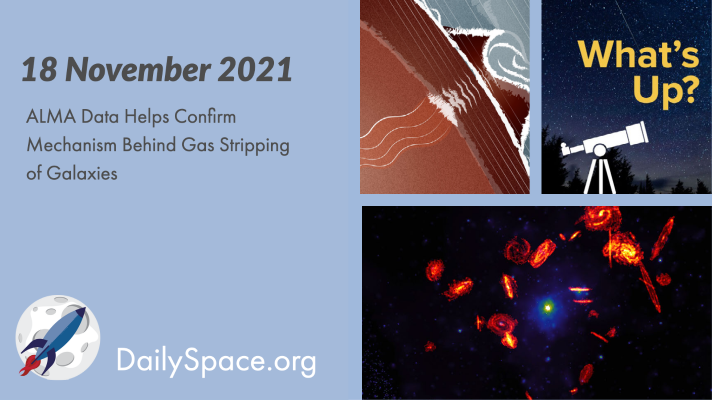
Dec 8, 2021 | Asteroids, Daily Space, Dark Matter, Earth, ESA, Galaxies, JWST, Moon, Spacecraft, The Sun, Very Large Array
Astronomers using the Very Large Array in New Mexico spent 40 hours observing galaxy AGC 114905, which seemed to have little to no dark matter in 2019 observations. The new evidence shows there is no dark matter in the galaxy at all. Plus, more Hubble and JWST updates, an eclipse over Antarctica, and an interview with Dr. Franck Marchis about citizen science.

Dec 6, 2021 | Asteroids, Comets, Cosmology, Daily Space, Earth, Exoplanets, Our Solar System, Review
A Mars-sized planet was found just 31 light-years away, orbiting its star every eight hours and having 55 percent the mass of the Earth, leading scientists to conclude it’s mostly made of an iron-nickel core. Plus, water on Earth, a huge comet, and a review of a Canon lens.

Dec 3, 2021 | Astrobiology, Comets, Daily Space, Earth, Galaxies, Sky Watching, Stars, Supermassive Black Holes
An analysis of over nine million samples of coccoliths whose ages span several million years has led scientists to conclude that changes in Earth’s orbit may have influenced changes in the size and shape of the microscopic algae. Plus, Europe contemplates geologic threats, and a comet is in this week’s What’s Up.

Dec 2, 2021 | Asteroids, Daily Space, Jupiter, Random Space Fact, Rockets, Soyuz, Space China, Space History, Spacecraft, SpaceX
During this jam-packed episode of Rocket Roundup, we cover several Chinese launches, SpaceX’s launch of NASA’s DART mission to hit an asteroid, and Russia’s launch of a military satellite. Plus, this week in rocket history, we look back at Pioneer 10’s encounter with Jupiter.

Dec 1, 2021 | Daily Space, Exoplanets, JWST, Mars, ROSCOSMOS, Soyuz, Spacecraft, Stars, Supermassive Black Holes, White Dwarfs
Using a new deep neural network called ExoMiner, scientists have added 301 exoplanets to the Kepler mission’s already enormous total of 4,569 confirmed planets. Plus, updates on Hubble and JWST, how InSight mapped Mars’ inner structure, an ultrahot Jupiter, and rockets. Yup. Rockets.

Nov 22, 2021 | Astrobiology, Daily Space, Earth, Galaxies, Mars, Moon, Sky Watching, The Sun
A new research project called the Virgo Environment Traced in Carbon Monoxide Survey (VERTICO) used data collected by the Atacama Large Millimeter/submillimeter Array (ALMA) to understand just what is stripping star-forming gases out of the Virgo Cluster of galaxies. Plus, calderas, a mass extinction, and this week’s What’s Up.








 We record most shows live, on Twitch. Follow us today to get alerts when we go live.
We record most shows live, on Twitch. Follow us today to get alerts when we go live.